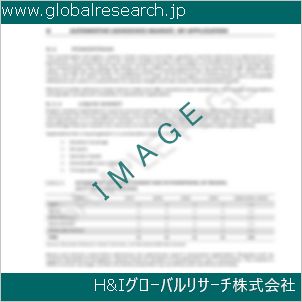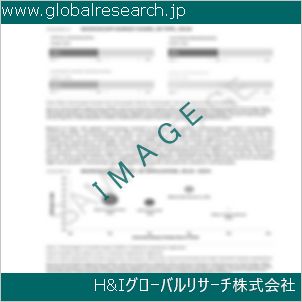Table of Contents
1 Industry Overview of Zinc Dust
1.1 Definition and Specifications of Zinc Dust
1.1.1 Definition of Zinc Dust
1.1.2 Specifications of Zinc Dust
1.2 Classification of Zinc Dust
1.3 Applications of Zinc Dust
1.3.1 Nuclear Application
1.3.2 Non-Nuclear Application
1.4 Industry Chain Structure of Zinc Dust
1.5 Industry Overview and Major Regions Status of Zinc Dust
1.5.1 Industry Overview of Zinc Dust
1.5.2 Global Major Regions Status of Zinc Dust
1.6 Industry Policy Analysis of Zinc Dust
1.7 Industry News Analysis of Zinc Dust
2 Manufacturing Cost Structure Analysis of Zinc Dust
2.1 Raw Material Suppliers and Price Analysis of Zinc Dust
2.2 Equipment Suppliers and Price Analysis of Zinc Dust
2.3 Labor Cost Analysis of Zinc Dust
2.4 Other Costs Analysis of Zinc Dust
2.5 Manufacturing Cost Structure Analysis of Zinc Dust
2.6 Manufacturing Process Analysis of Zinc Dust
3 Technical Data and Manufacturing Plants Analysis of Zinc Dust
3.1 Capacity and Commercial Production Date of Global Zinc Dust Major Manufacturers in 2023
3.2 Manufacturing Plants Distribution of Global Zinc Dust Major Manufacturers in 2023
3.3 R&D Status and Technology Source of Global Zinc Dust Major Manufacturers in 2023
3.4 Raw Materials Sources Analysis of Global Zinc Dust Major Manufacturers in 2023
4 Capacity, Production and Revenue Analysis of Zinc Dust by Regions, Types and Manufacturers
4.1 Global Capacity, Production and Revenue of Zinc Dust by Regions 2019-2024
4.2 Global and Major Regions Capacity, Production, Revenue and Growth Rate of Zinc Dust 2019-2024
4.3 Global Capacity, Production and Revenue of Zinc Dust by Types 2019-2024
4.4 Global Capacity, Production and Revenue of Zinc Dust by Manufacturers 2019-2024
5 Price, Cost, Gross and Gross Margin Analysis of Zinc Dust by Regions, Types and Manufacturers
5.1 Price, Cost, Gross and Gross Margin Analysis of Zinc Dust by Regions 2019-2024
5.2 Price, Cost, Gross and Gross Margin Analysis of Zinc Dust by Types 2019-2024
5.3 Price, Cost, Gross and Gross Margin Analysis of Zinc Dust by Manufacturers 2019-2024
6 Consumption Volume, Consumption Value and Sale Price Analysis of Zinc Dust by Regions, Types and Applications
6.1 Global Consumption Volume and Consumption Value of Zinc Dust by Regions 2019-2024
6.2 Global and Major Regions Consumption Volume, Consumption Value and Growth Rate of Zinc Dust 2019-2024
6.3 Global Consumption Volume and Consumption Value of Zinc Dust by Types 2019-2024
6.4 Global Consumption Volume and Consumption Value of Zinc Dust by Applications 2019-2024
6.5 Sale Price of Zinc Dust by Regions 2019-2024
6.6 Sale Price of Zinc Dust by Types 2019-2024
6.7 Sale Price of Zinc Dust by Applications 2019-2024
6.8 Market Share Analysis of Zinc Dust by Different Sale Price Levels
7 Supply, Import, Export and Consumption Analysis of Zinc Dust
7.1 Supply, Consumption and Gap of Zinc Dust 2019-2024
7.2 Global Capacity, Production, Price, Cost, Revenue, Supply, Import, Export and Consumption of Zinc Dust 2019-2024
7.3 USA Capacity, Production, Price, Cost, Revenue, Supply, Import, Export and Consumption of Zinc Dust 2019-2024
7.4 EU Capacity, Production, Price, Cost, Revenue, Supply, Import, Export and Consumption of Zinc Dust 2019-2024
7.5 China Capacity, Production, Price, Cost, Revenue, Supply, Import, Export and Consumption of Zinc Dust 2019-2024
7.6 Japan Capacity, Production, Price, Cost, Revenue, Supply, Import, Export and Consumption of Zinc Dust 2019-2024
8 Major Manufacturers Analysis of Zinc Dust
8.1 Manufacturer One
8.1.1 Company Profile
8.1.2 Product Picture and Specifications
8.1.2.1 Type I
8.1.2.2 Type II
8.1.2.3 Type III
8.1.3 Capacity, Production, Price, Cost, Gross and Revenue
8.1.4 Contact Information
8.2 Manufacturer Two
8.2.1 Company Profile
8.2.2 Product Picture and Specifications
8.2.2.1 Type I
8.2.2.2 Type II
8.2.2.3 Type III
8.2.3 Capacity, Production, Price, Cost, Gross and Revenue
8.2.4 Contact Information
8.3 Manufacturer Three
8.3.1 Company Profile
8.3.2 Product Picture and Specifications
8.3.2.1 Type I
8.3.2.2 Type II
8.3.2.3 Type III
8.3.3 Capacity, Production, Price, Cost, Gross and Revenue
8.3.4 Contact Information
8.4 Manufacturer Four
8.4.1 Company Profile
8.4.2 Product Picture and Specifications
8.4.2.1 Type I
8.4.2.2 Type II
8.4.2.3 Type III
8.4.3 Capacity, Production, Price, Cost, Gross and Revenue
8.4.4 Contact Information
8.5 Manufacturer Five
8.5.1 Company Profile
8.5.2 Product Picture and Specifications
8.5.2.1 Type I
8.5.2.2 Type II
8.5.2.3 Type III
8.5.3 Capacity, Production, Price, Cost, Gross and Revenue
8.5.4 Contact Information
…
9 Marketing Trader or Distributor Analysis of Zinc Dust
9.1 Marketing Channels Status of Zinc Dust
9.2 Traders or Distributors with Contact Information of Zinc Dust by Regions
9.3 Ex-work Price, Channel Price and End Buyer Price Analysis of Zinc Dust
9.4 Regional Import, Export and Trade Analysis of Zinc Dust
10 Industry Chain Analysis of Zinc Dust
10.1 Upstream Major Raw Materials Suppliers Analysis of Zinc Dust
10.1.1 Major Raw Materials Suppliers with Contact Information Analysis of Zinc Dust
10.1.2 Major Raw Materials Suppliers with Supply Volume Analysis of Zinc Dust by Regions
10.2 Upstream Major Equipment Suppliers Analysis of Zinc Dust
10.2.1 Major Equipment Suppliers with Contact Information Analysis of Zinc Dust
10.2.2 Major Equipment Suppliers with Product Pictures Analysis of Zinc Dust by Regions
10.3 Downstream Major Consumers Analysis of Zinc Dust
10.3.1 Major Consumers with Contact Information Analysis of Zinc Dust
10.3.2 Major Consumers with Consumption Volume Analysis of Zinc Dust by Regions
10.4 Supply Chain Relationship Analysis of Zinc Dust
11 Development Trend of Analysis of Zinc Dust
11.1 Capacity, Production and Revenue Forecast of Zinc Dust by Regions and Types
11.1.1 Global Capacity, Production and Revenue of Zinc Dust by Regions 2024-2029
11.1.2 Global and Major Regions Capacity, Production, Revenue and Growth Rate of Zinc Dust 2024-2029
11.1.3 Global Capacity, Production and Revenue of Zinc Dust by Types 2024-2029
11.2 Consumption Volume and Consumption Value Forecast of Zinc Dust by Regions, Types and Applications
11.2.1 Global Consumption Volume and Consumption Value of Zinc Dust by Regions 2024-2029
11.2.2 Global and Major Regions Consumption Volume, Consumption Value and Growth Rate of Zinc Dust 2024-2029
11.2.3 Global Consumption Volume and Consumption Value of Zinc Dust by Types 2024-2029
11.2.4 Global Consumption Volume and Consumption Value of Zinc Dust by Applications 2024-2029
11.3 Supply, Import, Export and Consumption Forecast of Zinc Dust
11.3.1 Supply, Consumption and Gap of Zinc Dust 2024-2029
11.3.2 Global Capacity, Production, Price, Cost, Revenue, Supply, Import, Export and Consumption of Zinc Dust 2024-2029
11.3.3 USA Capacity, Production, Price, Cost, Revenue, Supply, Import, Export and Consumption of Zinc Dust 2024-2029
11.3.4 EU Capacity, Production, Price, Cost, Revenue, Supply, Import, Export and Consumption of Zinc Dust 2024-2029
11.3.5 China Capacity, Production, Price, Cost, Revenue, Supply, Import, Export and Consumption of Zinc Dust 2024-2029
11.3.6 Japan Capacity, Production, Price, Cost, Revenue, Supply, Import, Export and Consumption of Zinc Dust 2024-2029
12 New Project Investment Feasibility Analysis of Zinc Dust
12.1 New Project SWOT Analysis of Zinc Dust
12.2 New Project Investment Feasibility Analysis of Zinc Dust
13 Conclusion of the Global Zinc Dust (CAS 7440-66-6) Industry 2024 Market Research Report
| ※参考情報 亜鉛末(Zinc Dust)は、化学式 Zn で表される金属元素である亜鉛を粉末状に加工したものです。そのCAS(Chemical Abstracts Service)番号は7440-66-6であり、様々な産業において幅広い用途を持つ重要な材料です。亜鉛末は、主にその化学的特性や生理的効果から注目されています。ここでは、亜鉛末の定義、特徴、種類、用途、また関連技術について詳しく説明いたします。 亜鉛末は、金属亜鉛を微細な粉末状態にしたもので、通常は粒径が1μmから100μmの範囲です。この微小な粒子サイズにより、大きな表面積を持つため、反応性が高く、様々な化学反応に適しています。亜鉛そのものは、銀白色の金属で、空気中で酸化しやすい特徴があります。そのため、亜鉛末は安定性を保つために、適切な条件下で保管する必要があります。 亜鉛末にはいくつかの種類が存在します。最も一般的なのは、ストレート亜鉛末と呼ばれるもので、自然な形での亜鉛を減圧で粉砕したものです。また、亜鉛の酸化物を含む亜鉛末や、他の金属と合金化された亜鉛末も存在します。これらの亜鉛末は、特定の用途に応じて選ばれます。 亜鉛末の主な用途には、以下のようなものがあります。まず第一に、亜鉛末は、防錆剤として広く利用されています。亜鉛は、他の金属と化学的に反応して、保護層を形成するため、鉄や鋼などの金属製品を酸化から守る役割を果たします。特に、亜鉛メッキ(亜鉛被覆)の工程で用いられ、主に建材や自動車部品などでその効果が期待されています。 次に、亜鉛末は、化学工業においても重要な原料となっています。例えば、亜鉛末は、化学反応において還元剤として使用されることが多いです。また、塗料やコーティングの成分としても利用されており、特に防腐効果が求められる場合には、その重要性が増します。 さらに、亜鉛末は、電子産業にも応用されています。印刷電子回路や集積回路の製造において、導電性を持つ材料としての役割を果たします。また、亜鉛末は、電池技術にも浸透しており、亜鉛空気電池やアルカリ電池の活物質として使用されるケースが増えてきています。 亜鉛末の利点には、経済性や環境への配慮が挙げられます。亜鉛は、比較的安価で豊富に存在する金属であり、リサイクルが容易な点も魅力の一つです。したがって、亜鉛を用いた製品や加工工程は、環境負荷の低減にも寄与しています。 一方で、亜鉛末には注意が必要な点も存在します。吸入した場合、亜鉛粒子が肺に蓄積されることがあり、これが健康に影響を及ぼす恐れがあるため、作業環境における適切な安全対策が求められます。また、亜鉛は過剰に摂取することが健康に悪影響を及ぼすことが知られており、特に高濃度での使用時には、細心の注意が必要です。 関連技術としては、亜鉛末を利用した新しい機能性材料の開発が進められています。例えば、亜鉛と他の金属を組み合わせた合金技術や、亜鉛を用いたナノテクノロジーの研究が活発化しています。これにより、さらなる高機能な製品の開発が期待されています。 亜鉛末は、その様々な特性により、今後も多くの分野での応用が期待されます。今後の研究では、亜鉛末の新たな活用方法や、環境に配慮した製造プロセスの開発が進むことでしょう。このような活動は、持続可能な社会の実現に向けた重要な一歩となると考えられます。亜鉛末は、私たちの生活の中で多様な形で重要な役割を果たしている素材であり、その将来性はますます高まっています。 |
❖ 免責事項 ❖
http://www.globalresearch.jp/disclaimer












